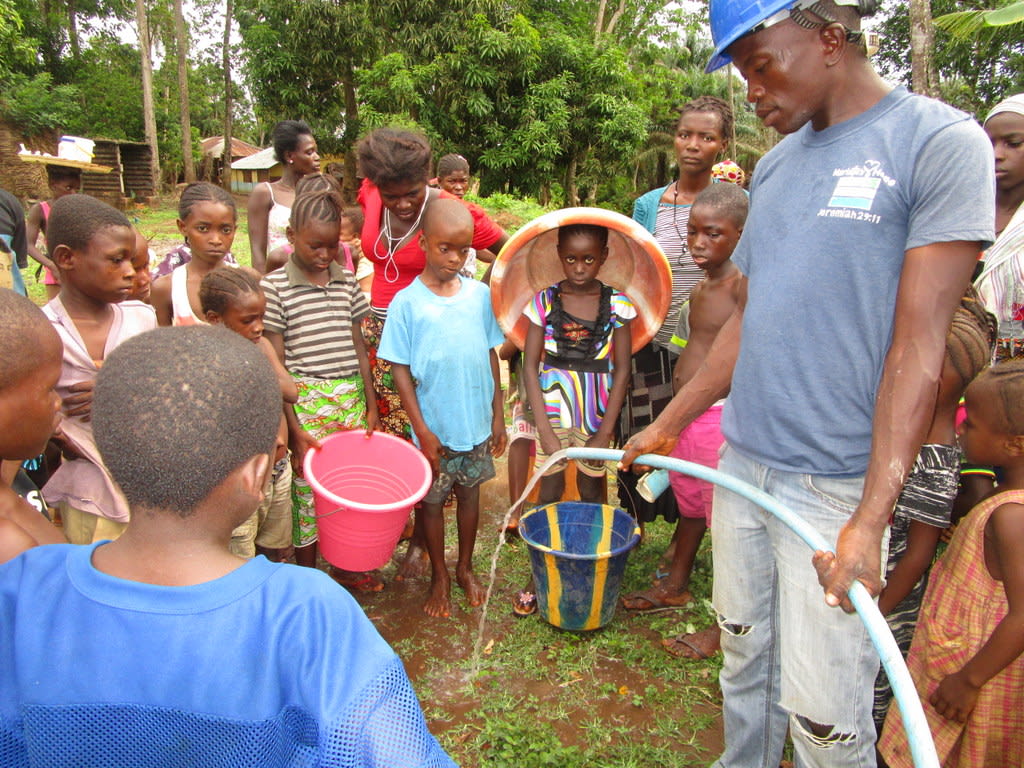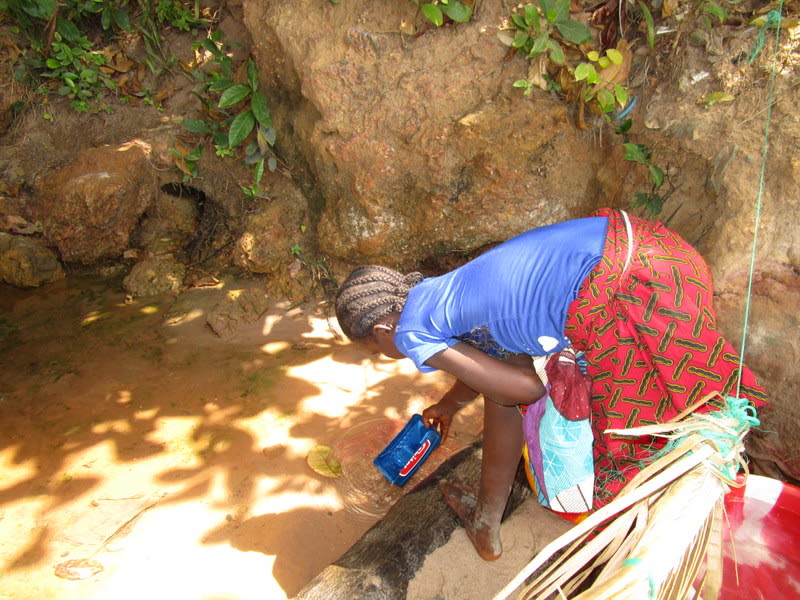This project is a part of our shared program with Mariatu’s Hope of Sierra Leone. Our team is pleased to directly share the below report (edited for clarity, as needed).
Welcome to the Community
There are no normal schedules in a fishing community. Children, men and women wake up at all hours of the day and night. There is never a set time for the fishermen to haul in their nets. Fish are valued more than gold in Kitonki.
The people who reside in this coastal area are known for their extensive knowledge on fishing and building boats. The founder of the town was a fisherman by the name of Ansumana Kamara, a young man with the strength of ten people.
In Kitonki, people usually eat whatever they can get their hands on. There is a certain species of rat that feeds on the rice planted in the swamp, and some people consider it to be a delicacy; roasted over an open flame with a pinch of salt and hot pepper.
Water Situation
We discovered a well in Kitonki back in 2001, which needed a pump replacement to get it up and running again. We stepped in to assist the community, and also offered hygiene and sanitation training to help them improve health. Without the proper treatment and storage, clean water fetched from the well won’t stay clean for long!
But over the course of quarterly visits, we discovered another issue that was keeping this community from having clean water. During the dry season that lasts up to four months, no water comes out of the pump! The environment has changed since the well was dug, and water no longer outlasts the driest months.
We were also receiving continuous calls before and after the dry season as the water level changed; community members had to work extra hard to get water from the pump, and would consequentially damage it from their overuse. We made 13 repairs on this pump last year!
Without this well, the community member goes back to the source they were using before: the swamp. Thus for a quarter of the year, waterborne disease is once again a reality. This season is just beginning, and so everyone is especially excited about this project!
Sanitation Situation
Almost all fishing communities lack proper sanitation facilities with there being no shame in using the beach as a latrine. There was an old man by the name of Braun Sesay, known for his brute strength. He believed that if he ever used a pit latrine, he'd lose all of his strength. Less than half of the households in Kitonki have their own pit latrine!
The ones we observed are made of mud blocks and old roofing removed from houses. Almost everything gets recycled in this community; the debris washed ashore is used for one thing or another.
There are no hand-washing stations here, revealing that community members aren't taking even the simplest steps to prevent communicable diseases. Area Chief Alhaji Lansana Bashim told us, "I have lived all my life in this community, eaten all types of food, drank all types of water, eaten all types of rodents, birds and God only knows what else. I never thought I will live to see a ripe age of sixty-two years. I still feel strong, even though tasks are becoming difficult everyday. I will say I have lived a good life. I have laid to rest fifteen of my children and the grandchildren, the count I do not remember. The outside world say we father a lot of children. How can we not? Most of them die before their fourth birthday. Our children die from the most common illnesses that would otherwise not kill anyone in the advanced world. A common cold kills alot of people here."
Plans: Hygiene and Sanitation Training
There will be hygiene and sanitation training sessions offered for three days in a row.
Not many hand-washing stations were observed here. After our visit, the hygiene and sanitation trainer decided it would be best to teach community members how to build a tippy tap (a hand-washing station built with a jerrycan, string, and sticks). They will use these tippy taps for hand-washing demonstrations, and will also teach about other tools like dish racks and the importance of properly penning in animals.
Every single household that wishes to use the revived water source will be required to have even the simplest of pit latrines.
These trainings will also strengthen the water user committee that manages and maintains this well. They enforce proper behavior and report to us whenever they need our help solving a serious problem, like a pump breakdown.
Plans: Well Rehabilitation
The well marked for this overhaul is dry for four months every year and needs major work to supply adequate, clean water to the community year round. The pump will be removed, and a man will be lowered inside with a hand auger. This hand auger will allow the team to drill several meters deeper to hit a sufficient water column that will ensure the well supplies water throughout the drier seasons. As the team drills, casing will be installed, transforming this hand-dug well into a pseudo-borehole. PVC piping will connect this lower system directly to the pump, a construction that we know will also improve the quality of water.
Once this plan is implemented, everyone within the community will have access to safe drinking water in both quality and quantity, even through the dry months.

 Protected Dug Well
Protected Dug Well




























